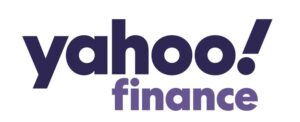By Alexis Brock
According to data from the Federal Reserve Bank of New York, Americans owe more than $1.6 trillion in student loans. Additional data from Pew Research indicates that the amount owed varies substantially by level of education. In 2016, the National Center for Education Statistics reported that the average cumulative student loan balance for law students was over $145,000.
These statistics are enough to terrify a first-generation student like me. I’ve grown up with debt-adverse parents who constantly warned me about the dangers of excessive credit, private lenders and accumulating debt. It was their wish that I would learn from their financial mistakes instead of making my own.
My parents cautioned me about debt, but they never dissuaded me from following my dreams. As a matter of fact, whenever given the opportunity, they pushed me towards them passionately.
For most of my life, I’ve dreamed of being an attorney. I’ve imagined myself in courtrooms advocating for my clients. I’ve pictured myself in law school learning to utilize legal precedents to advocate for others.
Something I hadn’t planned for, however, was the potential to be stuck with hundreds of thousands of dollars of debt. That aspect of my ambitions hadn’t yet made it through the rose-colored glasses I’d been wearing.
Admittedly, when I was finally forced to face that harsh reality, it took a while to get my head and my heart on the same page. I knew what I needed to do, but I wasn’t quite sure how I was going to pull it off. I needed a graduate school game plan.
The first phase of my plan was research. I decided to treat law school as an investment. It would be crucial to invest in a school that yielded great employment and bar passage outcomes. This way, I could be sure I’d see a proper return on my investment.
I used American Bar Association required disclosures to compare various law schools. I analyzed their employment outcomes. What sort of jobs were graduates landing? I took a deep dive into years of bar passage rates at each school of interest. What were the trends?
I always paid close attention to the average grant amount that each school awarded their admitted students. It was simple, more scholarship funds meant less student debt. Of course, I needed a strategy to be awarded a scholarship.
After even more research, I learned that law school scholarships are largely based on a combination of your GPA and LSAT (Law School Admissions Test) score. I was able to plug my GPA and LSAT score into a database and estimate the amount of money I’d be awarded based on previous applicants with similar numbers.
Next, I used a student loan calculator to crunch the numbers. I’d come up with a maximum amount of debt I was comfortable with taking on and was mindful of it as I was making the hypothetical calculations for various schools. I was sure to include cost of living expenses in this equation, even if I was fortunate enough to land a full scholarship, I’d still need to pay rent which differed drastically from one location to the next.
After research, more research, estimations, and calculations I felt like I’d found the perfect school to invest in. This game plan gave me the confidence to apply to law school and continue on the path to my dream career. Proper execution of the game plan helped me receive a full scholarship to Wake Forest University’s Law School, which is my dream law school. I consider it to be the perfect investment for my future. I’ll start there next fall and move into a new phase of the graduate school game plan.
Alexis Brock is studying journalism at the University of Georgia. She is a 2020 Cox-SABEW Fellow, a training program in partnership with UGA’s Cox Institute for Journalism Innovation, Management & Leadership.





